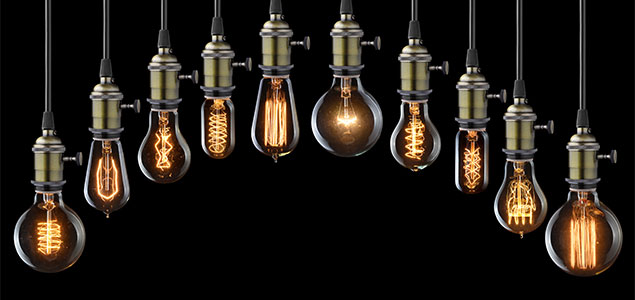By Bridget McCrea
When it comes to electrical contractors, taking the “show don’t tell” approach to new product introductions can work wonders.
In the April issue of tED magazine, two different electrical contractors told their stories of how distributors are helping them win new lighting business. In the Contractor Q&A, a contractor in New York described the relationship he has with his electrical distributor as “the most important thing we have,” mainly because the latter shows the contractor new products on a regular basis, and helps the company offer the “latest and most energy-efficient products.”
Of course, introducing new products isn’t what it used to be, particularly in the lighting world. Competition is fierce, commoditization runs rampant, digital communications reign, and no one has time to sit down and enjoy 3-hour-long product presentations anymore. And, for the distributor that’s doing a brisk e-commerce business, the opportunity to actually “sit down” in front of a customer has gone the way of the eight-track tape.
But that doesn’t mean you can ignore the need to show products to electrical contractors and other buyers on a regular basis. Here’s how two different distributors are handling the task in the current selling environment.
Roll Out a “Buy and Try” Program
As a 100% online distributor, Bulbs.com faces some unique challenges when it comes to new product introductions and demonstrations. “We don’t have anyone in the field unless we have a manufacturer that wants to make a joint sales call with us,” says Mike Connors, CEO. “As a result, we rely pretty heavily on digital messaging—and a lot of email.”
What Bulbs.com does have is a team of commercial salespeople—each of whom has his or her own territory and customer base—who are encouraged to stay in front of those buyers and show them new products on a regular basis. From a corporate perspective, Connors says Bulbs.com keeps close tabs on new breakthroughs (e.g., lamps or luminaire technology) being introduced by its suppliers. When it learns of such breakthroughs, it publishes press releases that include targeted messaging (i.e., for contractors or end users).
Several years ago, when CFLs were the dominant lighting products on the market, Bulbs.com rolled out a “buy and try” program for its commercial customers.
Starting with light bulbs and lamps (and later moving to LED as that technology was commercialized and popularized), the company offered up a “sampling” of new, hand-selected products at a fee. “We asked them to pay for the products because, in our experience,” says Connors, “if they don’t pay for it, the product just sits on a desk or out in the truck.”
After asking a series of questions pertaining to luminaire requirements, color temperature, and environmental use, the company sends out the products and then pays for the return shipment, if necessary. It doesn’t charge for restocking, but it does work quickly to send out another batch of samples (this time at no charge) that do meet the customer’s needs.
When the LED market began to pick up steam, Bulbs.com started using the program more aggressively because “customers were buying 500 at a time, and it was easier to move 10 samples around the country versus 500,” says Connors, who estimates that the company’s success rate on the first try with samples is currently at about 90 percent. “We don’t get very many of them back.”
Take the Multi-Pronged Approach
Knowing that new products and applications surface on an almost-daily basis in today’s business environment, Jim Dunn, executive VP at Warshauer Electric Supply in Tinton Falls, N.J., says getting in front of customers when very few of them ever “visit the counter” in a distributorship anymore is challenging at best. For this reason, it’s important to hit those customers who do make an appearance with the right information, marketing materials, and demonstrations.
“Some distributors miss the boat by not properly merchandising in their stores,” says Dunn. “Even if the president of the company isn’t coming in, his or her assistant or manager may grab a pamphlet off your counter and take it back to the company to show everyone.” Others will simply take a picture of the product and/or display with their mobile phones for sharing at a later time. For these reasons, Dunn says Warshauer works hard to ensure that new product information is properly merchandised across all five of its branches, and that sales staff is educated on the features and benefits of those new products.
“A lot of that responsibility lies with the manufacturer or the manufacturer’s rep to come in and train everyone before we merchandise the new product,” says Dunn. The next step, of course, is to get those new additions into the hands of customers who don’t ever visit the distributorship. This requires a multi-pronged approach that includes joint sales calls (with the supplier or its rep agency), the development of digital and hard-copy marketing materials (i.e., e-newsletters), and product demonstrations (when feasible).
“We send out e-newsletters on a monthly basis, but once a quarter we send out a ‘Keeping You Current’ newsletter that’s focused on new products,” says Dunn, noting that the latter includes all of the new products that Warshauer has started carrying during the previous three months. Finally, the company also gets the word out with “invoice stuffers” that it knows will most likely be seen by the company’s owner or president. “It doesn’t cost any extra postage,” says Dunn, “and gives us yet another avenue for talking about new products, processes, applications, or an event that’s going on here.”
Dunn says Warshauer’s multifaceted approach to new product introductions “works out great,” and that it goes a long way in getting the word out to a wide range of customers. “We’re always disappointed when we hear that someone didn’t know that we carried a specific product; that means our merchandising, e-newsletter, or and/or joint calls didn’t work,” says Dunn. “But we rarely hear that.”
—
McCrea is a Florida-based writer who covers business, industrial, and educational topics for a variety of magazines and journals. You can reach her at bridgetmc@earthlink.net or visit her website at www.expertghostwriter.net.
Tagged with contractors, Exclusive Feature, lighting, tED






